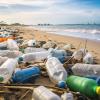
According to a new study, current climate policies will leave more than a fifth of humanity exposed to dangerously hot temperatures by 2100.
Despite the Paris Agreement pledge to keep global warming well below 2°C compared to pre-industrial levels, current policies are projected to result in 2.7°C warming by the end of the century. The new study, which has just been published in Nature Sustainability, assessed what this would mean for the number of people living outside the “climate niche” in which our species has thrived.
The results indicate that about 60 million people are already exposed to dangerous heat (average temperature of 29°C or higher) and two billion – 22% of the projected end-of-century population – would be exposed to this at 2.7°C of global warming.
The paper highlights the huge potential for decisive climate policy to limit the human costs and inequities of climate change. Limiting warming to 1.5°C would leave 5% exposed – saving a sixth of humanity from dangerous heat compared to 2.7°C of warming. The study also finds that the lifetime emissions of 3.5 average global citizens today – or just 1.2 US citizens – expose one future person to dangerous heat. This highlights the inequity of the climate crisis, as these future heat-exposed people will live in places where emissions today are around half of the global average.
“Climate change is hitting countries differently with several countries seeing large shares of their land and population being impacted disproportionately, and even more when considering that many of those countries have contributed little to anthropogenic emissions,” notes IIASA researcher Caroline Zimm, one of the study authors.
In worst-case scenarios of 3.6°C or even 4.4°C global warming, half of the world’s population could be left outside the climate niche, posing an existential risk.
The authors highlight that for every 0.1°C of warming above present levels, about 140 million more people will be exposed to dangerous heat. This reveals both the scale of the problem and the importance of decisive action to reduce carbon emissions. Limiting global warming to 1.5°C rather than 2.7°C would mean five times fewer people in 2100 being exposed to dangerous heat.
“The costs of global warming are often expressed in financial terms, but our study highlights the phenomenal human cost of failing to tackle the climate emergency,” says study lead author Tim Lenton, director of the Global Systems Institute at the University of Exeter.
Defining the niche
Human population density has historically peaked in places with an average temperature of about 13°C, with a secondary peak at about 27°C (monsoon climates, especially in South Asia). Density of crops and livestock follow similar patterns, and wealth (measured by GDP) peaks at about 13°C, while mortality increases at both higher and lower temperatures, supporting the idea of a human niche.
Although less than 1% of humanity currently lives in places of dangerous heat exposure, the study shows that climate change has already put 9% of the global population (more than 600 million people) outside this niche.
“Most of these people lived near the cooler 13°C peak of the niche and are now in the middle ground between the two peaks. While not dangerously hot, these conditions tend to be much drier and have not historically supported dense human populations,” explains study coauthor Chi Xu of Nanjing University. “Meanwhile, the vast majority of people set to be left outside the niche due to future warming will be exposed to dangerous heat.
Such high temperatures have been linked to issues including increased mortality, decreased labor productivity, lower cognitive performance, impaired learning, adverse pregnancy outcomes, decreased crop yields, increased conflict, and the spread of infectious diseases. While some cooler places may become more habitable due to climate change, population growth is projected to be highest in places at risk of dangerous heat, especially India and Nigeria.
The research team – which was led by the University of Exeter and included researchers from IIASA, the Potsdam Institute for Climate Impact Research, and the Universities of Washington, North Carolina State, Aarhus, and Wageningen – emphasizes that the worst of these impacts can be avoided by rapid action to cut greenhouse gas emissions.
The research was funded by the Open Society Foundation and the paper is an output of the Earth Commission – convened by Future Earth, the Earth Commission is the scientific cornerstone of the Global Commons Alliance. IIASA co-hosts the scientific secretariat of Working Group 1 of the Earth Commission.
Adapted from a press release prepared by the University of Exeter. Read the original press release here.
Reference
Lenton, T.M., Xu, C., Abrams, J.F., Ghadiali, A., Loriani, S., Sakschewski, B., Zimm, C., Ebi, K.L., Dunn, R.R., Svenning, J-C., Scheffer, M. (2023). Quantifying the human cost of global warming. Nature Sustainability DOI: 10.1038/s41893-023-01132-6 [pure.iiasa.ac.at/18812]
News

16 July 2024
Mapping global rooftop growth for sustainable energy and urban planning

28 June 2024
Drowning in waste: pollution hotspots in aquatic environments

21 June 2024

